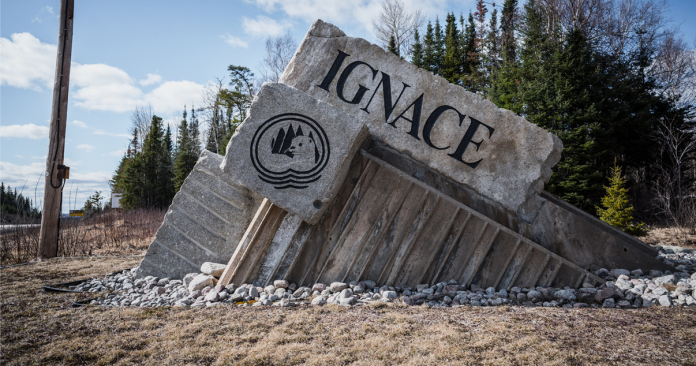The proposal to construct an underground storage facility near Ignace, Ontario, designed to permanently house nuclear waste from Canadian power plants, has sparked concerns among local residents and Indigenous communities.
These worries, highlighted in a recent NWONewsWatch article, stem from the hazardous nature of the materials being transported and the condition of the routes involved, notably Highways 11 and 17, which are notorious for frequent accidents.
Risks on Already Hazardous Roads
Highways 11 and 17 run through rural and isolated areas where adverse weather conditions, heavy commercial truck traffic, and outdated infrastructure significantly increase the risk of accidents. These routes, often used for transporting hazardous materials, lack the necessary safety measures to address potential disasters involving nuclear waste. This situation alarms not only local residents but also volunteer firefighters, who are concerned about inadequate training to handle incidents involving radioactive substances.
Indigenous Communities Speak Out
Several First Nations, some of which are located near the proposed site, have voiced significant concerns. For these communities, the project threatens not only the environment but also their traditional lands and livelihoods. They emphasize that managing nuclear waste is not solely a technical issue but also a cultural one, tied to a worldview that prioritizes sustainability and respect for nature.
Indigenous leaders also point to a lack of meaningful consultation. While some discussions have occurred, many argue that their voices have not been fully acknowledged, which fuels their opposition. They contend that the transportation and storage of nuclear materials fail to consider the long-term impacts on their lands and future generations.
Legitimate Concerns About Training and Oversight
Beyond environmental risks, residents and experts have raised growing concerns about the training and supervision of truck drivers tasked with transporting spent nuclear fuel. These fears were heightened by a CBC Marketplace report exposing fraudulent practices that allow some individuals to obtain driver’s licenses without adequate qualifications. These concerns are compounded by the fact that some companies continue to hire underqualified drivers, prioritizing profits over safety.
The idea of entrusting the transportation of such hazardous materials to inadequately trained drivers is not only alarming but also a direct reflection of the government’s failure to crack down on unsafe practices in the transport sector. The lack of action to address irresponsible companies and poorly trained drivers has contributed to a crisis of public trust. Residents are left fearing not only for their immediate safety but also for the long-term management of these sensitive projects.
Volunteer firefighters, who are often the first responders in emergencies, have also expressed frustration about their lack of specialized training to deal with incidents involving nuclear materials. This lack of preparedness only heightens anxiety within local communities.
Government Assurances Fall Short
The Canadian government asserts that its regulations for the transportation of nuclear waste are among the strictest globally. The Canadian Nuclear Safety Commission (CNSC) and Transport Canada enforce rigorous standards for the packaging, transportation, and management of these materials. Officials maintain that the risk of severe accidents is exceptionally low due to the use of specialized containers designed to withstand significant impacts and extreme temperatures.
However, these assurances have done little to allay the concerns of residents, truck drivers using Highways 11 and 17, and Indigenous communities. The apparent inaction of the government to maintain and improve these highways—already plagued by numerous serious accidents—undermines public confidence.
When the current state of road infrastructure appears neglected, when people are being stranded on the highway for extended periods, sometimes lasting hours or even days, it becomes difficult for citizens to trust the government’s ability to manage such a complex and potentially hazardous project. These doubts, coupled with the environmental and cultural concerns raised by Indigenous communities, are entirely justified.
















